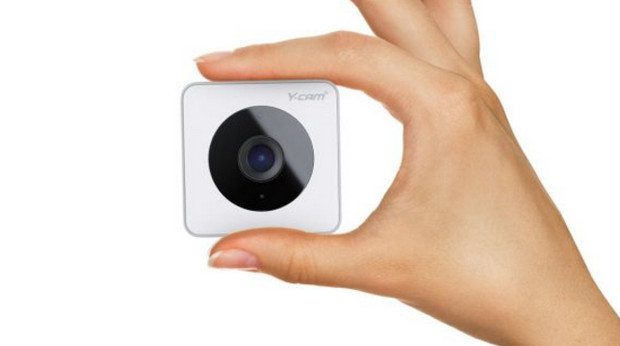
Recent reports from Nielsen, Strategy Analytics and IDC all placed Apple at the top of global smartphone vendor list, based on their second-quarter smartphone sales, but UK based stats firm Gartner is having none of it, declaring Symbian to the sultans of smartphone sales.
Gartner’s figures, released today, show the embattled Nokia still hanging on to the number one slot with 23.85 million Symbian devices shifting in the last quarter, compared to second-placed Apple’s 19.63 million iPhone sales.
Android king of the OSs
Android remained the hottest smartphone operating system with a market share of 43.4% and unit sales totaling 46.78 million devices,with Symbian’s 23.85 million sales securing it a number two slot with 22.1% of the market.
Apple held 18.2% of the smartphone market , followed by RIM’s BlackBerry OS at 11.7%, Samsung’s Bada OS at 1.9% and Microsoft mobile platforms with mere scraps at 1.6%.
Overall, smartphone sales were found to have leapt 74% year-on-year, with 107.7 million smartphones having been sold to end users around the world in the second quarter.
Here’s Gartner’s full stat-stuffed press release:
Gartner Says Sales of Mobile Devices in Second Quarter of 2011 Grew 16.5 Percent Year-on-Year; Smartphone Sales Grew 74 Percent
ZTE Became Fifth-Largest Mobile Phone Manufacturer and RIM Dropped to No. 6
Egham, UK, August 11, 2011—
Worldwide sales of mobile devices to end users totaled 428.7 million units in the second quarter of 2011, a 16.5 percent increase from the second quarter of 2010, according to Gartner, Inc. (see Table 1).
The channel built up stock at the end of the first quarter of 2011 in preparation of possible component shortages following the Japanese earthquake. As a result, sell-in demand slowed in the second quarter of 2011 to 421.1 million units, a 4.4 percent decrease from the previous quarter.
Sales of smartphones were up 74 percent year-on-year and accounted for 25 percent of overall sales in the second quarter of 2011, up from 17 percent in the second quarter of 2010.
“Smartphone sales continued to rise at the expense of feature phones,” said Roberta Cozza, principal research analyst at Gartner. “Consumers in mature markets are choosing entry-level and midrange Android smartphones over feature phones, partly due to carriers’ and manufacturers’ promotions.” However, replacement sales in Western Europe showed signs of fatigue as smartphone sales declined quarter-on-quarter.
Table 1
Worldwide Mobile Device Sales to End Users by Vendor in 2Q11 (Thousands of Units)
Vendor 2Q11Units 2Q11 Market Share (%) 2Q10Units 2Q10 Market Share (%) Nokia 97,869.3 22.8 111,473.7 30.3 Samsung 69,827.6 16.3 65,328.2 17.8 LG 24,420.8 5.7 29,366.7 8.0 Apple 19,628.8 4.6 8,743.0 2.4 ZTE 13,070.2 3.0 6,730.6 1.8 Research In Motion 12,652.3 3.0 11,628.8 3.2 HTC 11,016.1 2.6 5,908.8 1.6 Motorola 10,221.4 2.4 9,109.4 2.5 Huawei Device 9,026.1 2.1 5,276.4 1.4 Sony Ericsson 7,266.5 1.7 11,008.5 3.0 Others 153,662.1 35.8 103,412.6 28.1 Total 428,661.2 100.0 367,986.7 100.0 Source: Gartner (August 2011)
In smartphones, Nokia’s sales into the channel in the second quarter of 2011 were low. This was partly due to a very competitive market that deflated demand for Symbian, but also to inventory management issues in Europe and China in particular. The channel bought less and worked hard to reduce stock levels, partly by cutting prices on older products. These factors reduced Nokia’s average selling price for smartphones, compared to the first quarter of 2011. “The sales efforts of the channel, combined with Nokia’s greater concentration in retail and distributors’ sales, saw Nokia destock more than 9 million units overall and 5 million smartphones, helping it hold on to its position as the leading smartphone manufacturer by volume,” said Ms. Cozza. “However, we will not see a repeat of this performance in the third quarter of 2011, as Nokia’s channel is pretty lean.”
Samsung achieved strong growth in sales of mobile devices. For example, the Galaxy S II sold well, and this model went on to chalk up 5 million sales by the end of July. A strong performance in the smartphone market helped Samsung increase its market share, to become the third-largest smartphone vendor. However, its overall share dropped year-on-year, and grew only marginally quarter-on-quarter, mainly due to Samsung’s weaker presence in more price-sensitive market segments.
Apple continued to exceed expectations, even though the iPhone 4 will soon be replaced by a new model. Part of its growth came from the 42 new carriers and 15 new countries that it entered in the second quarter of 2011, which brought its total coverage to 100 countries. This expansion caused its inventory to grow a little by the end of the second quarter of 2011, when sales to end users stood at 19.6 million units. In mainland China, Apple is the seventh-largest mobile phone vendor and the third-largest smartphone vendor.
Research In Motion’s (RIM’s) share of the smartphone market declined to 12 percent in the second quarter of 2011, from 19 percent a year ago. Also, the company lost its No. 5 position in the worldwide ranking of mobile device vendors to ZTE. Demand for RIM’s devices in the second quarter was impaired by an ageing portfolio and delays in shipping products. In the coming quarters RIM will have to deal with increased competition to its messaging offering and manage a platform migration from BlackBerry 7 to QNX.
Google and Apple are the obvious winners in the smartphone ecosystem. The combined share of iOS and Android in the smartphone operating system (OS) market doubled to nearly 62 percent in the second quarter of 2011, up from just over 31 percent in the corresponding period of 2010 (see Table 2). Gartner analysts observed that these two OSs have the usability that consumers enjoy, the apps that consumers feel they need, and increasingly a portfolio of services delivered by the platform owner as well.
Table 2
Worldwide Smartphone Sales to End Users by Operating System in 2Q11 (Thousands of Units)
Operating System 2Q11Units 2Q11 Market Share (%) 2Q10Units 2Q10 Market Share (%) Android 46,775.9 43.4 10,652.7 17.2 Symbian 23,853.2 22.1 25,386.8 40.9 iOS 19,628.8 18.2 8,743.0 14.1 Research In Motion 12,652.3 11.7 11,628.8 18.7 Bada 2,055.8 1.9 577.0 0.9 Microsoft 1,723.8 1.6 3,058.8 4.9 Others 1,050.6 1.0 2,010.9 3.2 Total 107,740.4 100.0 62,058.1 100.0 Source: Gartner (August 2011)
“We expect manufacturers and distributors to remain cautious about raising their stock levels in the second half of 2011, following the recent uncertainty on the world financial markets,” said Annette Zimmermann, principal research analyst at Gartner. Gartner expects sales of mobile devices to grow around 12 percent in 2011.
For more information, see the Gartner report “Market Share: Mobile Communication Devices by Region and Country, 2Q11” which is available on Gartner’s website at http://www.gartner.com/resId=1764117.


